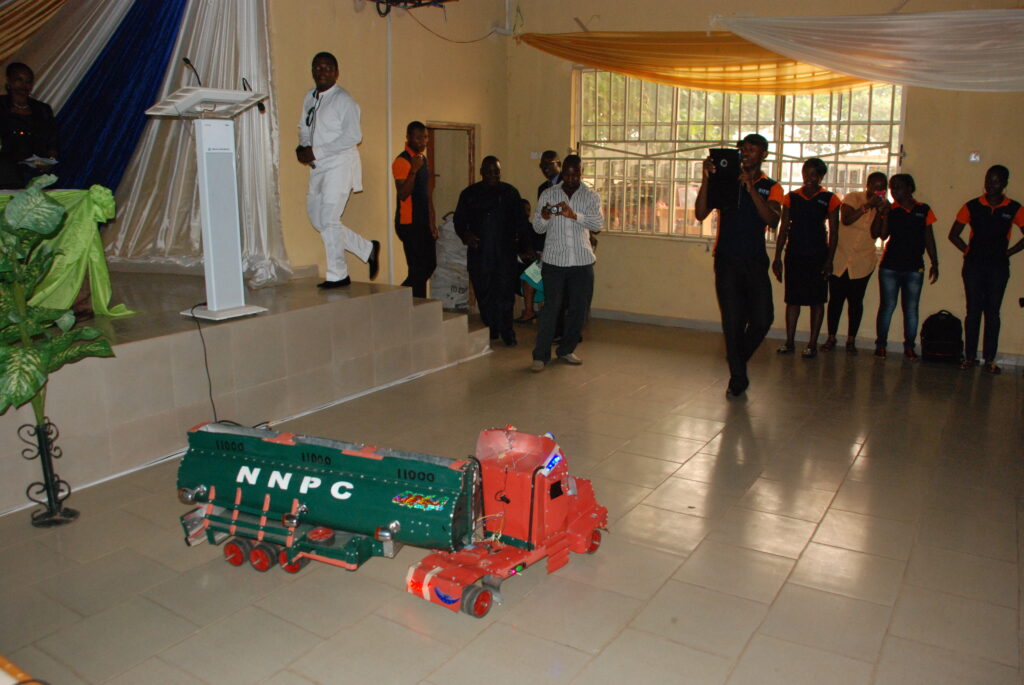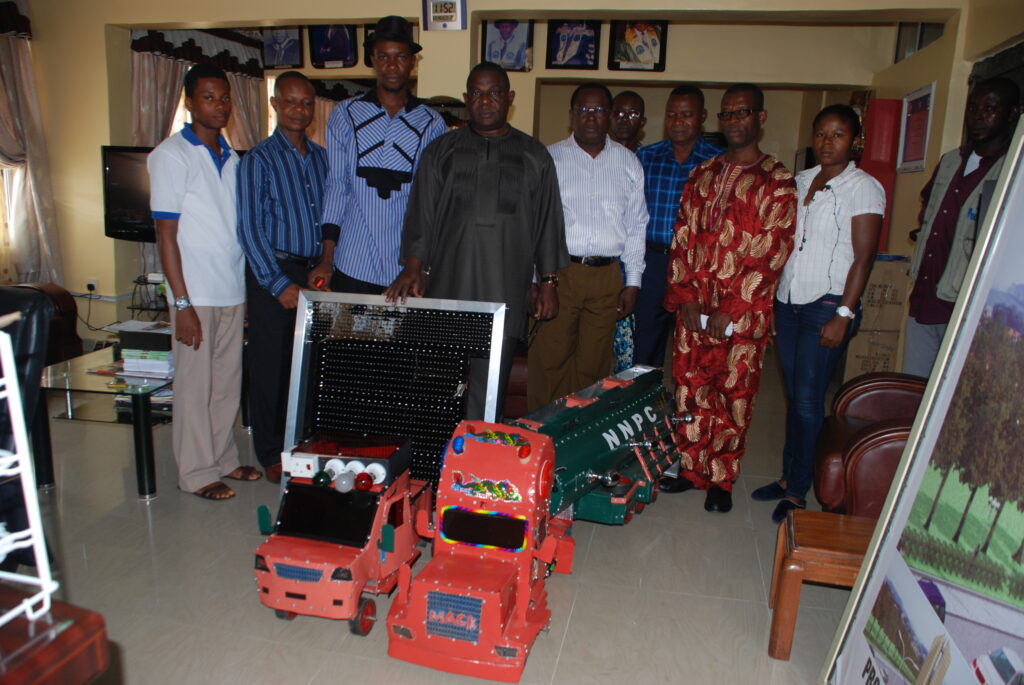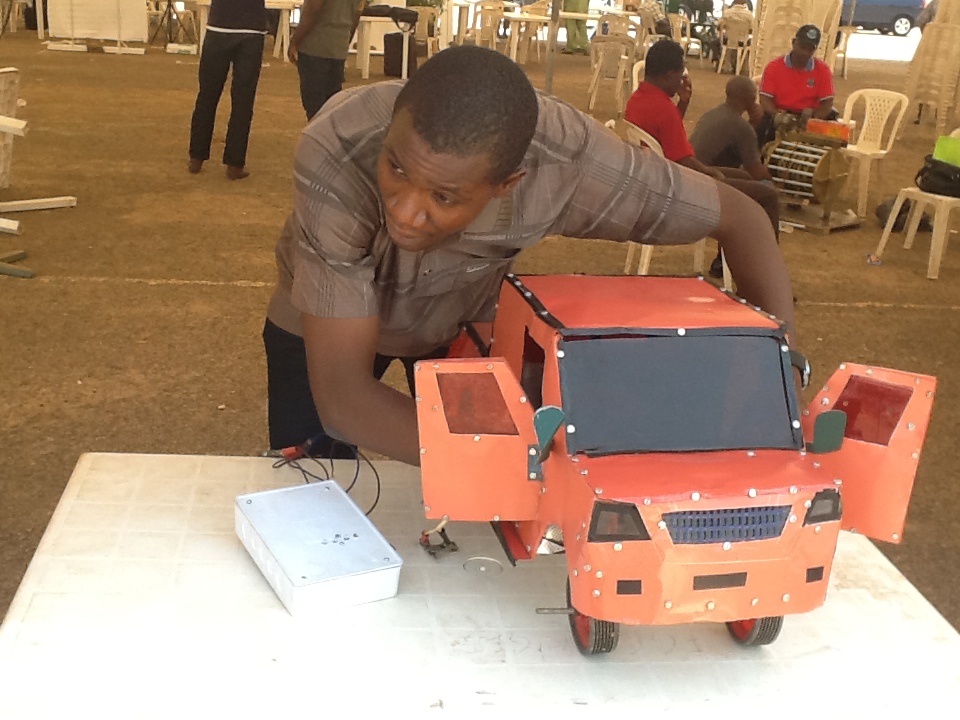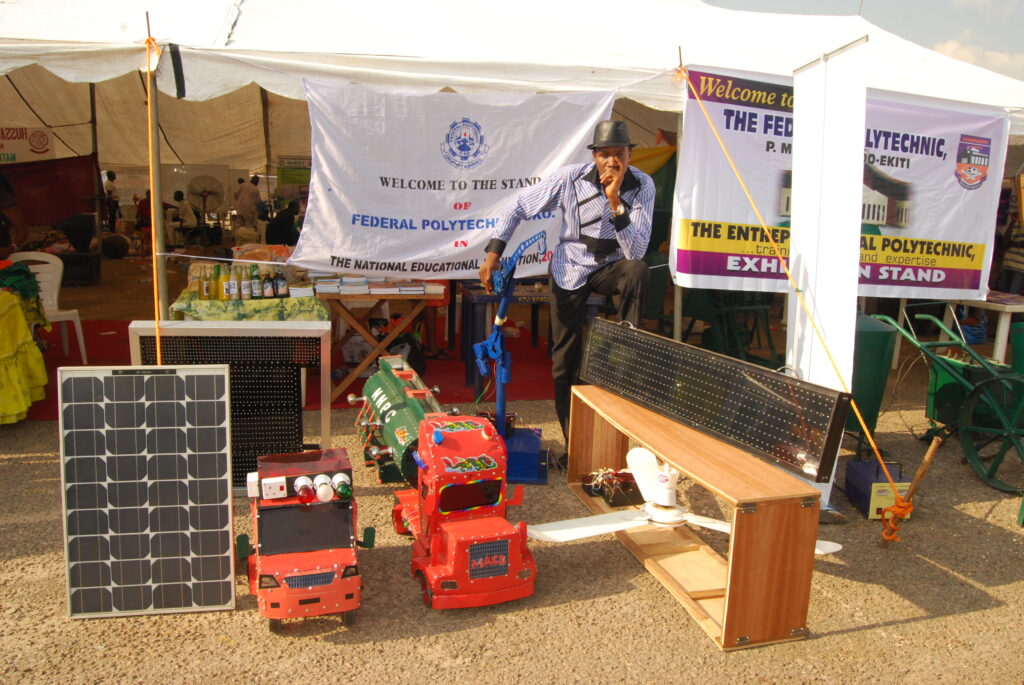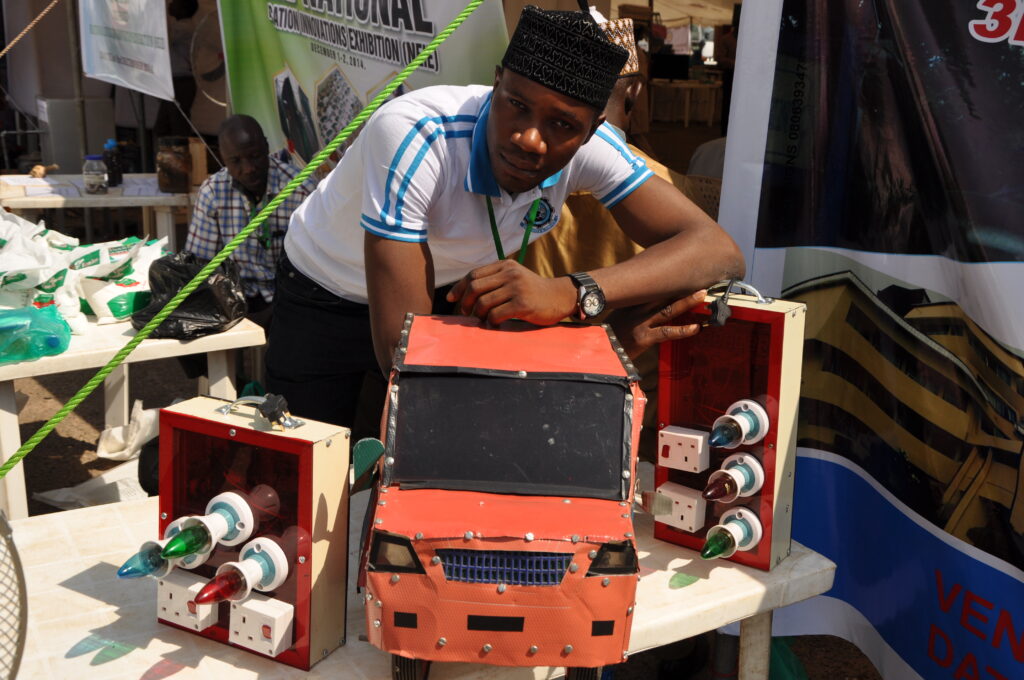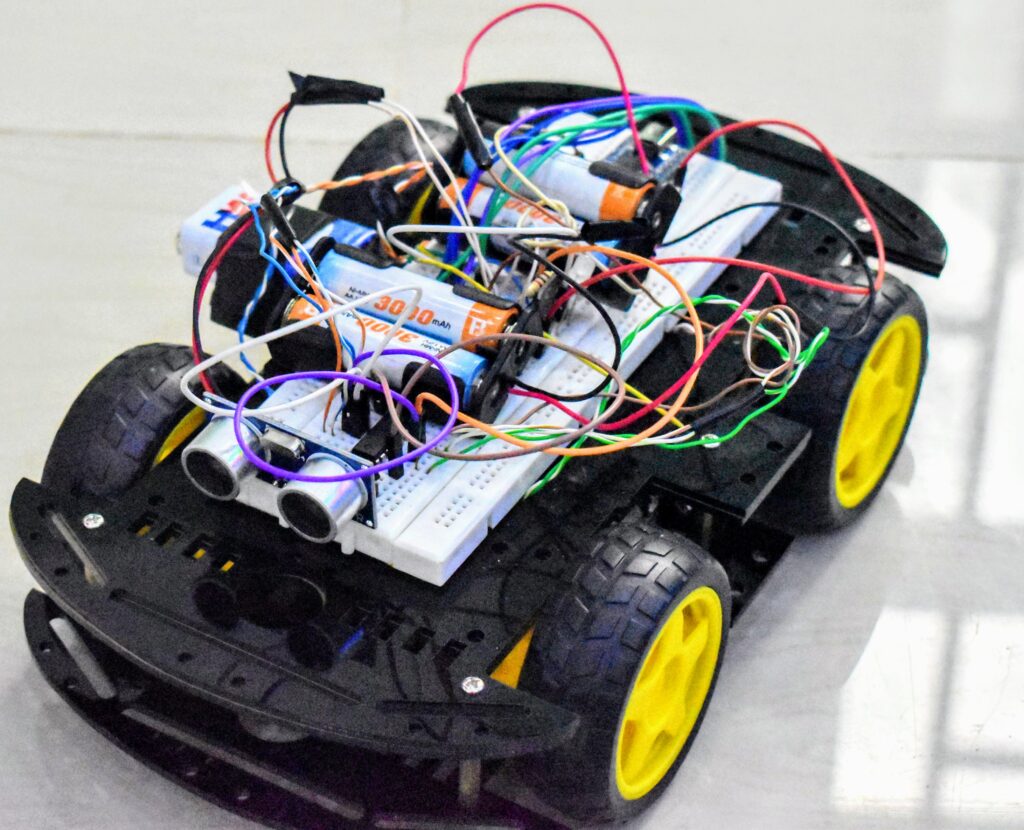
GSM-CONTROLLED NNPC TRUCK (SMART ELECTRIC VEHICLE)

GSM-CONTROLLED NNPC TRUCK (SMART ELECTRIC VEHICLE) The most innovative project in the 2012 National Science and Technology Exhibition held for all the tertiary institutions in Nigeria – Invented by Prince Nwankwo

A. Project Overview: The GSM-Controlled NNPC Truck is a groundbreaking prototype that demonstrates how mobile telephony and embedded systems can be leveraged to control remote vehicles. Recognized as the Most Innovative Project during the prestigious 2012 National Science and Technology Exhibition held in Abuja, Nigeria, this invention combines mobility, wireless communication, and automation to simulate the real-time control of an NNPC fuel tanker truck. The system enables users to control the truck’s movement; including forward and reverse driving, using a mobile phone. With integrated obstacle detection and avoidance capabilities, this prototype showcases advanced safety and automation features suitable for industrial, defense, and logistics applications.
B. Innovation Description: The core technology behind this invention is DTMF (Dual Tone Multi-Frequency) communication, widely available in mobile phones, in combination with Bluetooth connectivity. The system is designed to operate within a 10-metre range, allowing full control of the truck remotely via a paired mobile device.
C. Key components and functionalities include:
- Bluetooth Module: Facilitates wireless communication between the mobile phone and the truck.
- DTMF Decoder (MT8870): Interprets keypad tones from the phone and converts them into digital signals.
- Microcontroller (AT89C51): Processes commands from the DTMF decoder and controls the truck’s functions accordingly.
- Relay Modules: Used to drive electric motors that power the truck’s movement (forward, reverse, stop, etc.).
- BC337 Transistors: Act as buffers between the microcontroller and the relays.
- Ultrasonic and Infrared Sensors: Enable real-time obstacle detection and avoidance to enhance navigation safety.
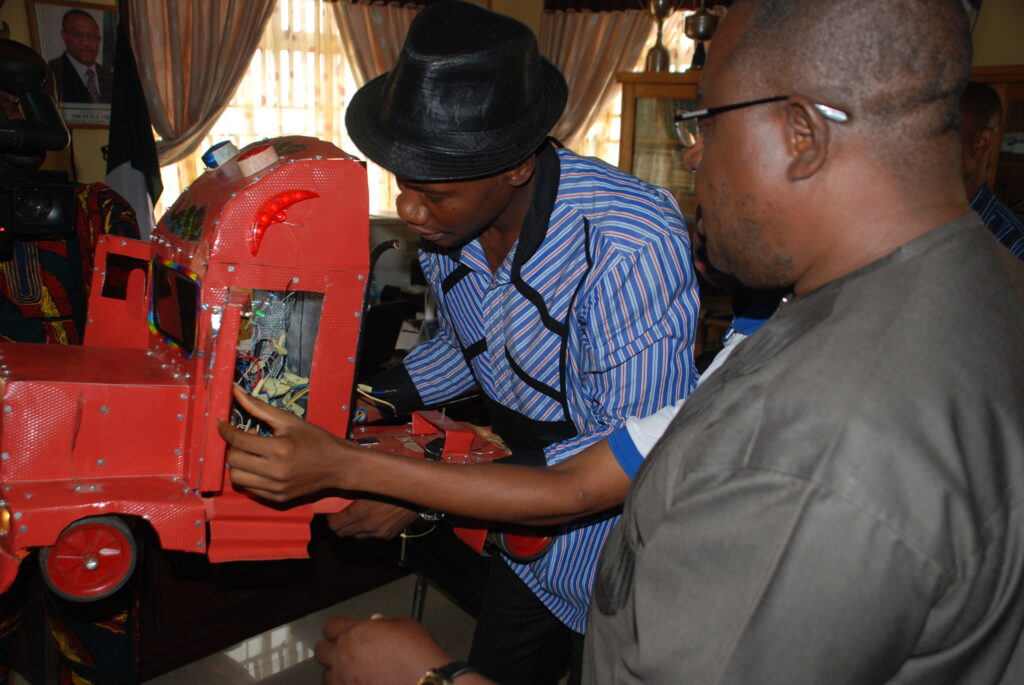
When a user presses the control key on their mobile phone, the tone is transmitted via Bluetooth to the onboard DTMF decoder, which converts it into a binary signal. The microcontroller processes this signal and responds by activating the appropriate relay, thereby controlling the motion of the truck.
D. Key Features
- Wireless Operation using Bluetooth-enabled mobile phones.
- Bidirectional Movement: Supports both forward and reverse driving.
- Obstacle Detection using ultrasonic and infrared sensors for safe navigation.
- Embedded Relay Control for motor actuation.
- Real-Time Command Processing via microcontroller (AT89C51).
- Robust Circuit Design integrating DTMF technology with standard logic components.
- 10-Metre Operating Range suitable for practical remote demonstration and control.
E. Primary Sustainable Development Goals (SDGs) Addressed by the Smart Electric Vehicle
1. SDG 7 – Affordable and Clean Energy
- Encourages the transition from fossil fuel-based vehicles to electric-powered systems.
- Supports the development of clean, sustainable energy use in transportation.
2. SDG 9 – Industry, Innovation and Infrastructure
- Demonstrates innovative integration of GSM, Bluetooth, and embedded systems in smart vehicle control.
- Strengthens infrastructure for intelligent transport and automation.
3. SDG 11 – Sustainable Cities and Communities
- Promotes safer, smarter, and eco-friendly mobility solutions.
- Reduces urban air pollution and enhances transport safety through automation.
4. SDG 13 – Climate Action
- Reduces carbon emissions by advocating electric mobility and remote vehicle management.
- Aligns with global efforts to combat climate change through sustainable technology.
F. Impact and Relevance: This innovative project represents a step forward in wireless robotic control systems, with applications in automated vehicle navigation, industrial transportation, and hazardous-area operations. Its successful demonstration in a national forum underscores the potential of local ingenuity in solving complex engineering problems through simple, cost-effective technology. By combining embedded systems, mobile communication, and sensor integration, the GSM-Controlled NNPC Truck project continues to inspire further research and innovation in automation and remote control technologies.

